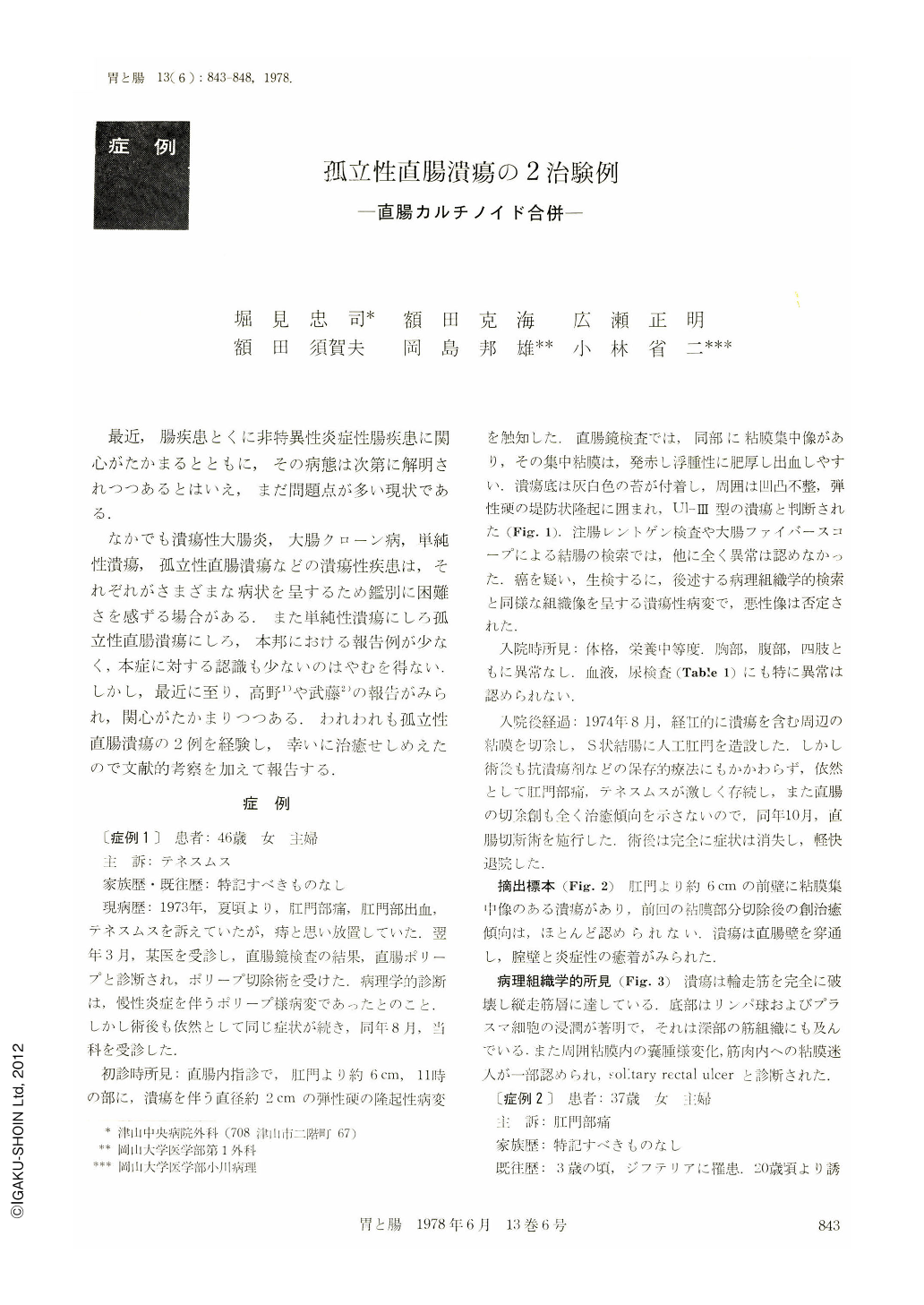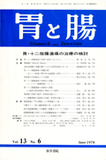Japanese
English
- 有料閲覧
- Abstract 文献概要
- 1ページ目 Look Inside
最近,腸疾患とくに非特異性炎症性腸疾患に関心がたかまるとともに,その病態は次第に解明されつつあるとはいえ,まだ問題点が多い現状である.
なかでも潰瘍性大腸炎,大腸クローン病,単純性潰瘍,孤立性直腸潰瘍などの潰瘍性疾患は,それぞれがさまざまな病状を呈するため鑑別に困難さを感ずる場合がある.また単純性潰瘍にしろ孤立性直腸潰瘍にしろ,本邦における報告例が少なく,本症に対する認識も少ないのはやむを得ない,しかし,最近に至り,高野1)や武藤2)の報告がみられ,関心がたかまりつつある.われわれも孤立性直腸潰瘍の2例を経験し,幸いに治癒せしめえたので文献的考察を加えて報告する.
Recently, two cases of solitary rectal ulcer were treated by amputation of the rectum. Case Ⅰ was a 46-year-old woman with the history of anal bleeding, anal pain and tenesmus for a year without medication. About six months before admission, a rectal polyp was treated by polypectomy. Histologically, the specimen was a polypoid lesion with chronic inflammation. The symptoms, however, continued after polypectomy and the patient was admitted to our hospital. A prominant ulcerative lesion was found by remanoscopic examination on the anterior wall of the rectum 6 cm on the oral side of the anal ring. Despite macroscopic suspicion on neoplasm, the biopsy specimens showed a benign lesion only. A trial of censervative treatment for two weeks was unsuccessful, so that partial resection of the ulcer was performed together with colostomy. The symptoms continued for two months after the operation despite appropriate antiulcer medication. Finally, amputation of the rectum was performed. This produced complete relief of all symptoms. Macroscopically, the solitary ulcer was still present on the resected specimen. A deep ulcer and prominent chronic granulomatous inflammation were found microscopically.
Case Ⅱ was a 37-year-old woman with a history of anal bleeding, anal pain, and tenesmus from the age of 20. Anal symptoms had worsened since a month before admission. A prominant bloody ulceration was found on the posterior wall of the rectum 4 cm on the oral side of the anal ring by romanoscopic examination. Biopsy was performed because of the macroscopic suggestion of malignancy, but this was not confirmed histologically. Antiulcer drugs, Predonine and Salazopyrin were administered over a period of four months, but proved ineffective. Amputation of the rectum, therefore, together with colostomy, was performed. In the resected specimen, a deep ulcer and a polypoid lesion were noted. The polypoid lesion was located 5 cm on the oral side of the ulcer. Histologic examination showed a small corcinoid tumor in the submucosal layer of the polypoid lesion, while the ulcerative lesion had defects in the mucosal and circular muscle layers with marked chronic inflammation.
In general, conservative therapies are not effective in the management of solitary rectal ulcers ; nor is colostomy successful.

Copyright © 1978, Igaku-Shoin Ltd. All rights reserved.


